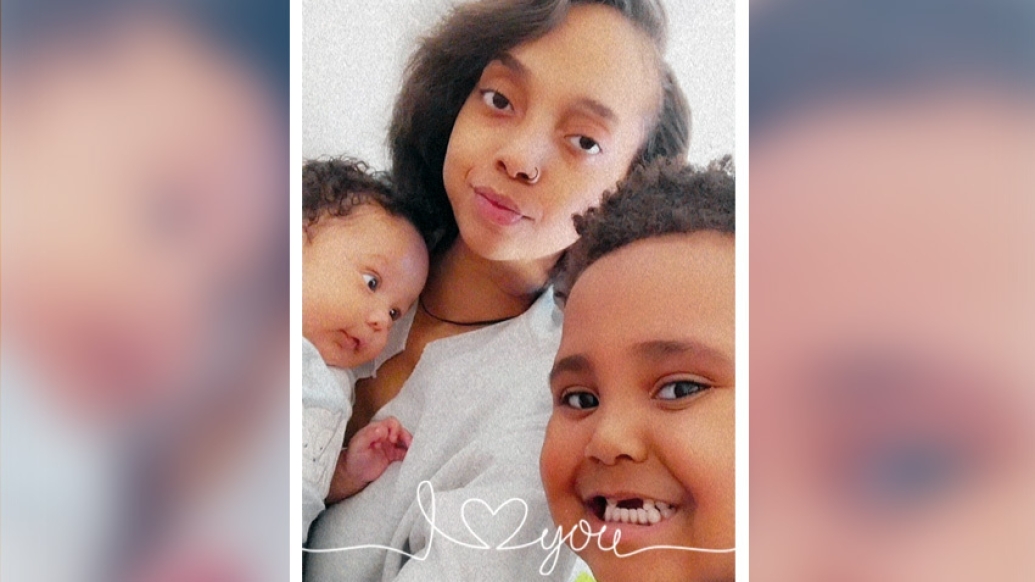After the diagnosis, Cristina Bashans was carefully monitored for a potentially life-threatening aortic aneurysm.
5:00 AM
Author |

Cristina Bashans had no idea she could be putting her life in danger last summer when she became pregnant with her second child.
The Saginaw, Michigan, resident had been under the care of a local cardiologist for supraventricular tachycardia, a condition that causes the heart to beat rapidly. During a routine cardiology appointment that coincided with her pregnancy, imaging revealed Bashans also had an aortic aneurysm — a bulge in a weakened area of the wall of her aorta.
It was something the 22-year-old's obstetrician was concerned about, not because of the size of the aneurysm but because of what may have caused it. Bashans' physicians suspected Marfan syndrome, a connective tissue disorder that can affect the aorta and put a patient at greater risk of a life-threatening aortic dissection.
The risk increases with pregnancy.
Aortic dissection happens when weakened layers of the aorta pull apart or tear, trapping blood between the layers. This further weakens the aorta – the body's main artery – and may cause it to rupture.
When genetic testing ruled out Marfan syndrome, however, Bashans' obstetrician referred her to the Frankel Cardiovascular Center at University of Michigan Health, noted for its reputation for excellence in high-risk pregnancies and cardiovascular disease.
Making the diagnosis
There, she met with Elizabeth Langen, M.D., of U-M Health's Cardio-Obstetrics Program. A specialist in maternal and fetal medicine, Langen would help manage Bashans' care for the duration of her pregnancy. Bashans would also require the care of other specialists, including cardiologist Marion Hofmann, M.D., who first met with her during a telehealth visit.
"The patient came to me at 32 weeks pregnant via a virtual appointment. My assessment was limited by video visit only, but I could see certain characteristics that pointed to a condition known as Loeys-Dietz syndrome, or LDS," said Hofmann. "Although the syndrome and Marfan patients have similar characteristics, there are small, subtle differences, which I detected during our video visit."
Like Marfan syndrome, Loeys-Dietz can affect the aorta and lead to a dangerous dissection, said Hofmann, who noted, "Because the patient was in her third trimester of her pregnancy, we understood that it was critical to make a diagnosis."
A follow-up genetic test, also done remotely, confirmed Loeys-Dietz syndrome, a rare genetic connective tissue disorder that can affect blood vessels, including the aorta, as well as bones, joints and internal organs. It is caused by a mutation in the TGFBR1, TGFBR2, SMAD3, TGFB2 or TGFB3 genes.
Telemedicine breaks down the barriers to expert care.Marion Hofmann, M.D.
As in Bashans' case, the syndrome often goes undiagnosed until an aortic aneurysm or dissection is discovered on a CT scan or echocardiogram.
Some patients have characteristics such as scoliosis, long, slender fingers, flexible joints, a small or receding chin, translucent skin and abnormal wound healing after surgery or trauma. But, says Hofmann, not every Loeys-Dietz syndrome patient exhibits these characteristics. Because the condition can be inherited, genetic testing is typically recommended for first degree relatives, including parents, siblings and children.
The right call and the right team
"The patient's obstetrician made the right call by identifying her as high risk and referring her to our team," said Hofmann "The chance of dissection is high in LDS patients, and her pregnancy put her at even greater risk."
Hofmann credits the telemedicine visit, which eliminated the need for Bashans to make the long drive to U-M Health.
"This is important because patients can now have timely appointments. Telemedicine breaks down the barriers to expert care."
Hofmann also reinforces the importance of Bashans being treated at a center of excellence with a highly experienced team.
"Our multidisciplinary team consisted of high-risk cardio-obstetrics specialists, a genetic counselor, cardiologists and surgeons, if necessary, all working closely at a center of excellence to provide the necessary expertise, including determining the safest delivery method."
Bashans was induced at 36 weeks and gave birth via cesarean delivery in March to Lorenzo, who joined his older brother, Bryson.
Looking toward the future
Like all patients with Loeys-Dietz syndrome, she will have regular checkups and vascular imaging to determine the timing for a referral to surgery for elective aortic repair to prevent aortic dissection, says Hofmann.
She is also being treated for high blood pressure, which puts stress on weakened areas of the aortic wall, and is adhering to lifestyle modifications – no heavy lifting or future pregnancies, which will put her at greater risk for aortic dissection.
Another pregnancy would be very dangerous, says Hofmann.
"A postpartum MRI revealed that Cristina's aorta had enlarged, so we will continue to monitor her closely to determine next steps."
As she cares for her newborn and 6-year-old sons, Bashans understands the importance of caring for herself, as well.
"I need to continue to be aware of my condition and limitations. My last pregnancy was a very stressful time," said Bashans. "I'm so glad it all worked out."

Explore a variety of health care news & stories by visiting the Health Lab home page for more articles.

Department of Communication at Michigan Medicine
Want top health & research news weekly? Sign up for Health Lab’s newsletters today!





